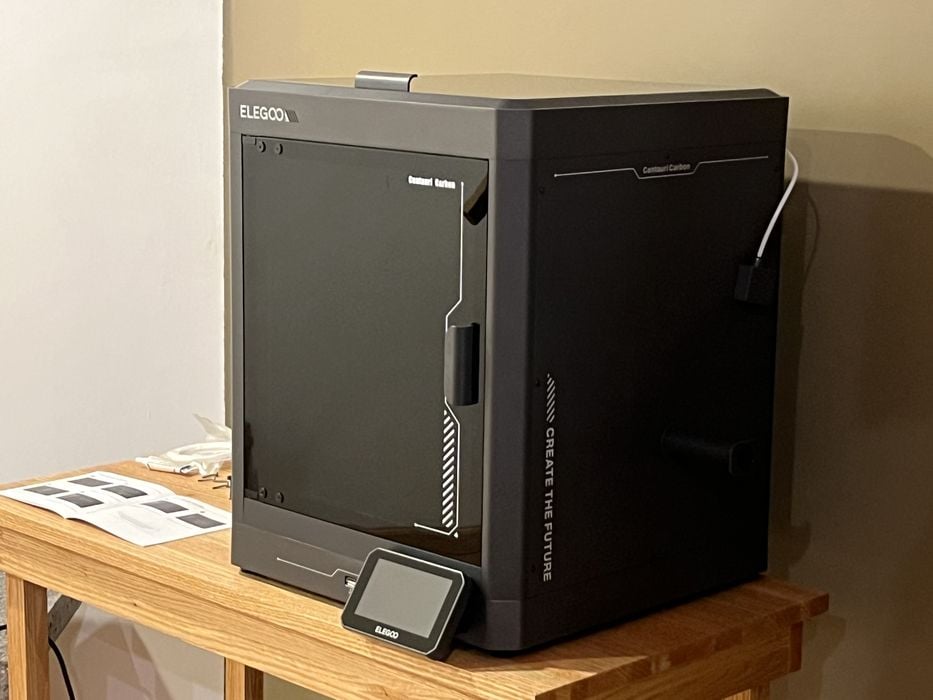
Let’s take a deeper look at Elegoo’s incredible price breakthrough from earlier this week.
To recap, Elegoo joined the enclosed, high-performance desktop 3D printer competition launched by Bambu Lab two years ago. Bambu Lab’s X1C provided a powerful, reliable machine at a far lower cost than the professional devices available at the time, resetting the market price.
Since then, other 3D printer manufacturers have had to step up, and most of the major players have introduced similar machines at varying price points.
This week, it was Elegoo’s turn, and their entrant, the Centauri Carbon, shocked everyone with their price point: US$299. This is half or even a quarter of the price of their competitors. It’s amazing that Elegoo was able to pull this off, and it has reset the price levels in the desktop 3D printing industry. You can read a bit more about my thoughts here.
Since then, I’ve been looking a bit deeper into this and realized a few more things.
The US$299 price is for the Centauri Carbon. That’s the model that is able to 3D print in carbon fiber, which requires, among other things, a hardened steel nozzle. Typically, 3D printer manufacturers offer a regular and “carbon” version of their equipment at a slightly higher price.
Did Elegoo launch a non-Carbon version of the Centauri?
They did. And it’s priced at only US$199.
What’s the difference between the two models, aside from the hardened steel nozzle? An inspection of the specifications shows that the Carbon version includes a webcam and side panels, but the remaining specifications remain the same, including:
- 256 x 256 x 256 mm build volume
- 500mm/s maximum print speed
- 20,000 mm/s/s acceleration
- CoreXY motion system
- Fully automated calibration
- 32 cubic mm/s volumetric delivery
- Vibration compensation and pressure advance
- Aluminum die-cast frame
- Advanced cooling system
And all the other usual features one would expect on a modern desktop 3D printer.
It seems that the Carbon version simply includes a webcam and is able to print a much wider range of materials. Therefore, the non-Carbon version would be perfectly appropriate for many people.
This is quite a development. In my previous post, I suggested that open gantry, bedslinger-style desktop 3D printers might be challenged by the low US$299 cost of the Centauri Carbon. Later, seeing the non-Carbon US$199 version, that thought became the conclusion.
If you could buy a Centauri for US$199, why would you even consider any bedslinger? Most of them cost more than US$199, and there are very few 3D printers of note with prices lower than the Centauri. Let’s take a look at some of the pricing of popular systems of this type:
- US$999 (5.0X): Prusa MK4S
- US$699 (3.5X): AnkerMake M5
- US$439 (2.2X): Bambu Lab A1
- US$399 (2.0X): Creality Ender-3 V3 Plus
- US$299 (1.5X): Anycubic Kobra 3
Flashforge doesn’t even sell open gantry machines anymore.
You get the idea: all of these manufacturers will have to adjust their pricing as a result of Elegoo’s new product or stop producing products of this class.
I discovered one interesting price change: Mingda has reduced the price of their current open gantry system, the Magician X2, from US$349 to only US$99.
US$99 seems like an absurdly low price for a pretty functional desktop 3D printer, but when compared to the Centauri price, it makes sense. You might actually choose the Magician X2 over the Centauri to save US$100.
I believe that is the future for bedslinger desktop 3D printers: pricing in and around US$100. Pricing for enclosed CoreXY desktop 3D printers will settle in the US$300-400 range., at least until something else happens.
Competition is fantastic for buyers, but perhaps a bit scary for some of these 3D printer manufacturers.
Via Elegoo
